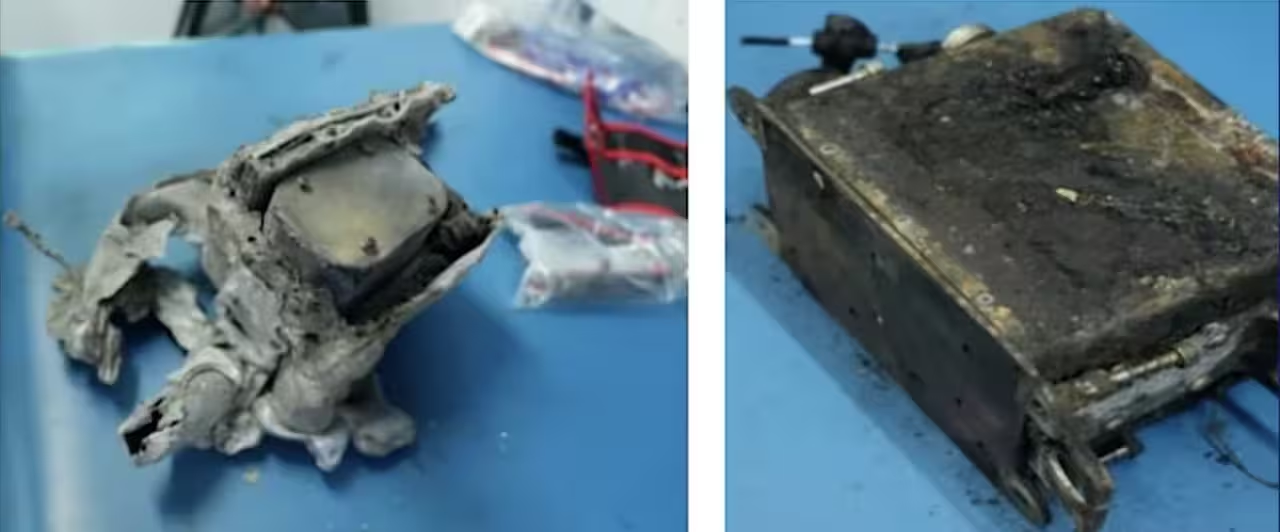airplane ha scritto: 10 settembre 2025, 9:28
airplane ha scritto: 8 settembre 2025, 1:58
>B787 PILOT
"DUAL ENGINE RELIGHT DELAY"
-----------------------------------------
I’m B787 PILOT and I’m struggling to find any reference to a having a delay in
moving the FCS (fuel control switches) to aid in an (all Engine) in flight restart .
I can’t see this in the FCOM, FCTM, QRH, or any official investigation.
>E’ ORA DI SOTTOLINEARE
ALCUNI PUNTI IMPORTANTI
------------------------------------
1) Questo ultimo è importante Post (riportato sopra) come si vede è scritto da un B787 PILOT;
Questo mi ha convinto di dover sottolineare alcune cose importanti sul breve volo-crash del B787 Air India.
2) Voglio dire, che ancora prima, c’era stata anche una parte dello scritto di (AVH) Editorial (6° observation)
che aveva attirato la mia attenzione.
3) Quest’ultimo, che ho citato, assieme a un altro post postato da un B787 CAPTAIN che aveva fatto,
Con un FFS=Full Flight Simulator una replicazione del breve volo-crash dell’Air India.
> TO REMEMBER
(AVH) 6° OBSERVATION.
----------------------------
[...]
The Preliminary Report makes clear, that the gear lever was still in the down position and was never attempted to be put up.
Usually the pilot monitoring (PM)- the captain - would announce "positive rate of climb", the pilot flying (PF) - the first officer - would then command "Gear up!"and the captain would move the lever and confirm "Gear coming up".
This procedure would likely have the pilot communication "positive rate of climb", "gear up" command and the gear lever put into the up position below 75 feet AGL. However, this did not occur, it is thus likely, that the pilots noticed an anomaly before the call "positive rate of climb".
None of this is mentioned in the Preliminary Report,
hence it remains unclear whether none of these calls occurred - or were just not mentioned in the selective excerpt. It thus also remains unclear why the gear lever was, according to the preliminary report, never moved into the gear up position.
If we assume that one of the pilots intentionally brought the aircraft down, it is quite possible and even likely, that such calls were not made this time.
But then in this scenario, why do the engines run down prior to the actual deed of putting the fuel switches intentionally into CUTOFF?
So, we have based on the preliminary report,
the videos and the Boeing Manuals suggesting that the engines began to run down before the fuel switches were brought into the position CUTOFF.
So, why the fuel switch transition from RUN to CUTOFF and back to RUN?
The memory items for dual engine failure require the crew to place the fuel switches to CUTOFF and move them back to RUN, as the Boeing Manuals make clear (quoted above). It is possible, that the crew was aware of the necessity to wait between CUTOFF and RUN in order to ensure a proper reset of the EECs as shown by simulator tests following incident B787 ANA NH-985 (2019).
The purpose of this is simple: Reset the EEC (Engine Electronic Control), and at the same time force the EEC to switch to the other channel, in the hope that this will enable at least one engine if not both engines to recover and run again.
As we know from the preliminary report, this nearly worked, one engine had already started to recover but had not yet reached sufficient thrust to prevent the crash.
Now, the question is what we conclude from the preliminary report's statement reading: "In the cockpit voice recording, one of the pilots is heard asking the other why did he cutoff. The other pilot responded that he did not do so."
This is not a verbatim quote, but a summarizing narrative which does not establish the context of that exchange, and may even be misleading of what was really communicated between the pilots. Only a proper transcript of the entire communication can clarify the context and the exact wording.
Could the scenario be that the crew noticed the engines running down, and after overcoming the surprise effect one pilot reminds the other to perform the memory items - "Did you do the CUTOFF?" and the other responds "No" and now performs these memory items?
I believe therefore, that the transition of the fuel switches from RUN to CUTOFF was indeed done by the crew with intention, as a reaction to observing both engines running down. However, this was not the start of the crash sequence nor was the intention to bring the aircraft down, rather it was the intention to save the aircraft by at least relighting one of the engines according to the checklist memory items.
Why did the engines run down?
This is the decisive question that so far nobody can answer without further evidence, investigation and analysis.
There had been a similar case, in which the crew was able to recover the engines, which triggered the Service Bulletin FAA-2021-0273-0013 Attachment 2 of 2021.
This could be one possibility of how the simultaneous engine run downs could have been triggered by the simultaneous fault of two active MN4s sitting on the two EECs (with the other two inactive MN4s perhaps unaffected). A bump from the runway, the vertical acceleration of the beginning of lift off could have caused the already cracked, weakened solder balls to temporarily open completely and lose contact, causing the MN4s to send a thrust demand below flight idle to the engine control thus causing the engines run down. This is one of many possibilities (however one that is officially documented).
There are certainly other possibilities, too,
that need investigation and need to be ruled out.
Ps.






